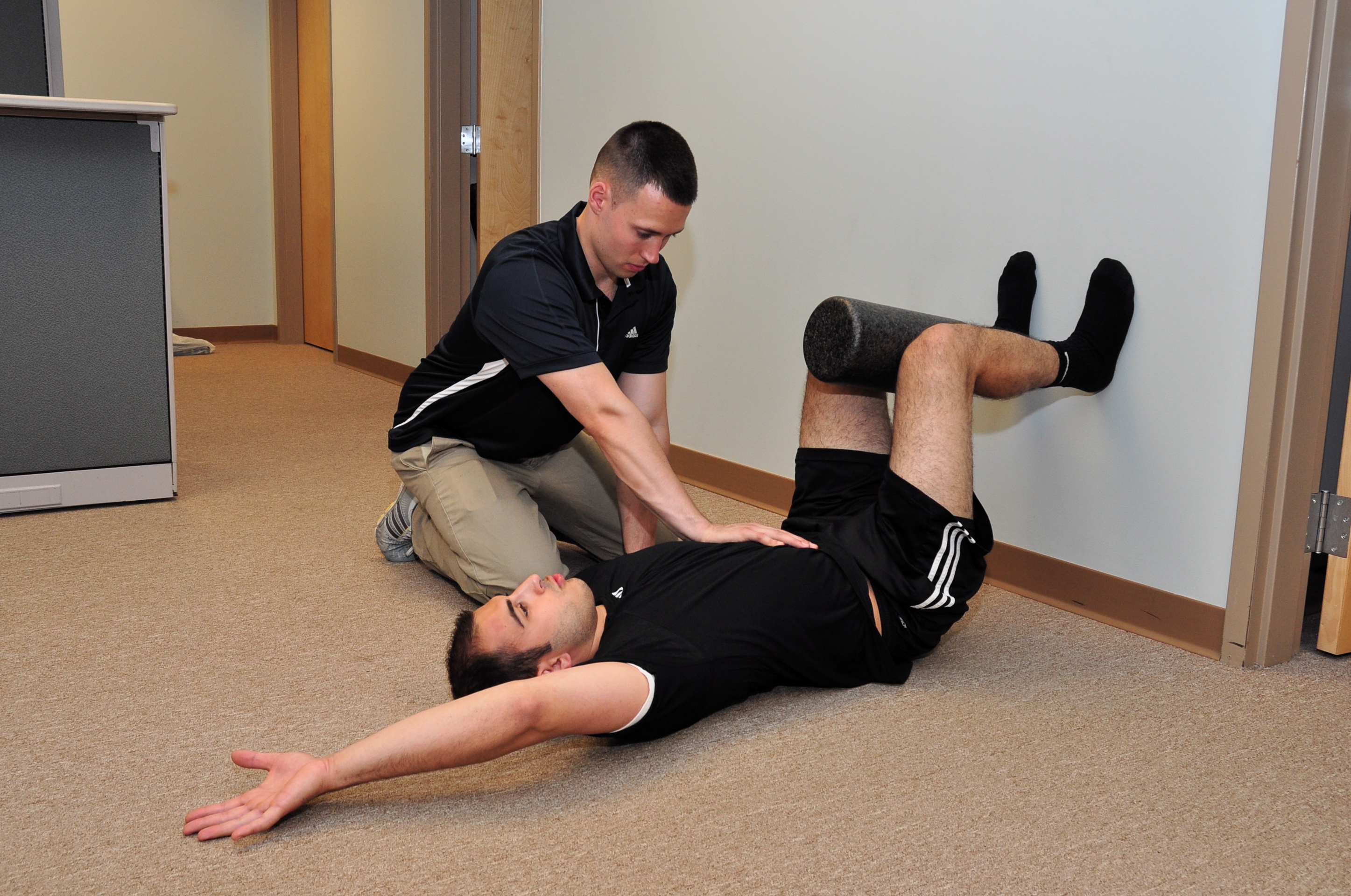The Importance Of Hands-On Cueing
Whether you’re in a therapy or performance training setting the importance of good cueing to achieve a desired outcome cannot be understated. Quality visual demonstration, rich verbal phrasing and targeted physical touch are all powerful tools when used correctly in the process of cueing movement.
We know that client specific learning styles will dictate how strongly a client responds to different sensory inputs. We also know that optimal learning and adaption occurs when we receive rich inputs from a combination of all the sensory pathways not just our primary one.[i]
With much of the current discussion surrounding the importance of verbal cueing, specifically extrinsic and intrinsic verbal cueing, I thought it would be good to also shed some light on the science of kinesthetic cueing.
Providing kinesthetic feedback via manual touch has long been seen as a valuable technique to effectively cue movement patterning. Actively putting someone in position or guiding them through a pattern so that they can develop proprioception seems like a fairly obvious and effective way to get the outcomes that we want in the gym or in the clinic. With that in mind I think the value of using physical touch is still something that gets missed by many coaches and clinicians.
Possibly, it’s because practitioners fear accusations of inappropriate touching or because they themselves are not confident in their cues, but I often find many coaches to be far too “hands off” with their clients. Both the former and the latter excuses can be disregarded by displaying confidence and clear intent when cueing your clients.
Mike Boyle, has always harped on our staff members at MBSC to be more hands-on while coaching. He frequently reminds the staff that when you are physically cueing an athlete you should act confident and provide a verbal declaration of your intent to avoid “creepiness” or misunderstanding. Check out the video below of Mike coaching a hang clean to see what I’m talking about.
So we know that physically positioning our clients into the desired position is an affective technique to aid the development of a new skill but why?
Tactile Stimulation
Providing tactile stimulation when adjusting the position of a client will provide afferent sensory input to the central nervous system. Hands-on cueing provides the client proprioceptive feedback, guiding the developing movement like a set of training wheels. Studies have shown even short interventions of tactile-kinesthetic stimulation are able to increase local motor activity and alertness while also providing a calming effect, reducing hypertonicity and regulating respiration.[ii][iii]
Nerve Growth Factor
Nerve Growth Factor (NGF) is a protein essential to the development and maintenance of the peripheral and sensory nervous systems. NGF promotes sensory nerve fiber proliferation and the synthesis of acetylcholine, a neurotransmitter crucial nerve signal transmission.[iv]
So what does NGF have to do with hands-on coaching?
Studies have shown that just the feeling of touch promotes the release of NGF in the brain. The release of NGF in a learning environment will facilitate nerve net growth in response to the learned task in both the central and peripheral nervous system, resulting in improved proprioceptive feedback and motor patterning.[v] [vi]
Application
Clients will often comment on how much easier a movement feels when guided gently by a coaches hand. One of the exercises I find most significantly affected is the 90/90 breathing exercise pictured below. The act of guiding the ribs down can greatly assist clients in learning how to properly depress the ribcage and re-gain their zone of apposition. Additionally, research has demonstrated therapeutic touch can have significant favorable effects on stress hormone profiles, making hands on cueing even more valuable in a rehabilitative setting.[vii][viii]
When you are working in a rehab setting or developing untrained athletes, physically cueing your clients through touch is a must. Bridging the gap for clients who are lacking full-body proprioception can often not be done effectively through words and demonstrations alone. My suggestion for improving your cueing is to provide quality cues for all three sensory inputs: verbal, visual and physical. Make it a goal with every client following a visual demonstration to provide a hands-on cue along with a good verbal description of the movement you are trying to develop.
Contact: Kevin@ Movement-As-Medicine.com
[i] Gilakjani, Abbas Pourhosein. “Visual, Auditory, Kinaesthetic Learning Styles and Their Impacts on English Language Teaching.” Journal of Studies in Education 2.1 (2011): 104-113.
[ii] Field, Tiffany M., et al. “Tactile/kinesthetic stimulation effects on preterm neonates.” Pediatrics 77.5 (1986): 654-658.
[iii] Field, Tiffany M. “Touch therapy effects on development.” International Journal of Behavioral Development 22.4 (1998): 779-797.
[iv] Levi-Montalcini, Rita. “Developmental neurobiology and the natural history of nerve growth factor.” Annual review of neuroscience 5.1 (1982): 341-362.
[v] Tortora, Gerard J. and Nicholas P. Anagnostakos. Principles Of Anatomy And Physiology. Sixth Edition. NY Harper, 1990. pp 336-337.
[vi] Hannaford, Carla. Smart Moves: Why Learning Is Not All in Your Head. Arlington, VA: Great Ocean, 1995. 44-48. Print.
[vii] IBID
[viii] Woods, Diana Lynn, and Margaret Dimond. “The effect of therapeutic touch on agitated behavior and cortisol in persons with Alzheimer’s disease.” Biological research for nursing 4.2 (2002): 104-114.

